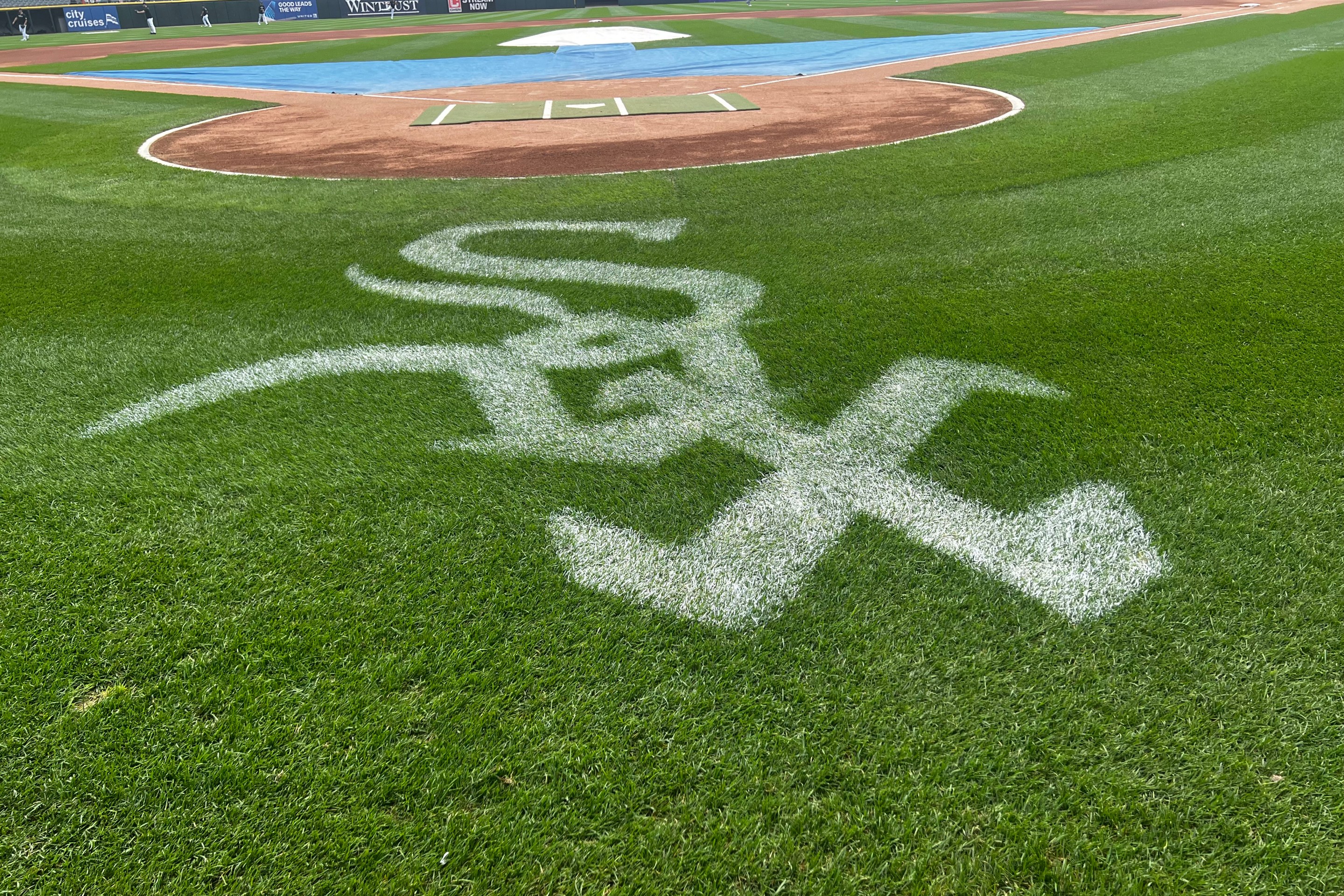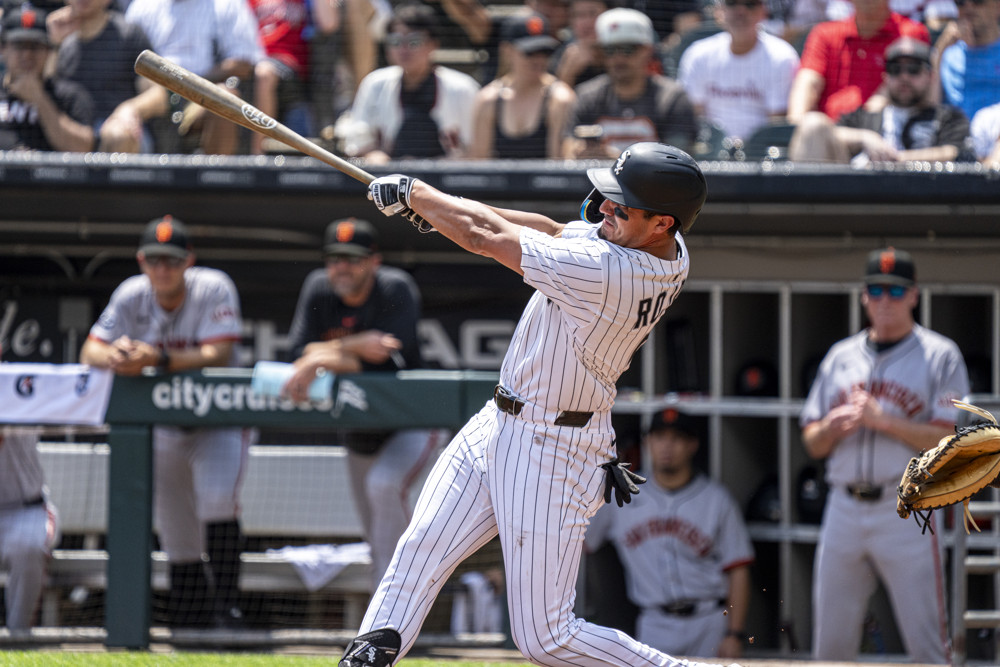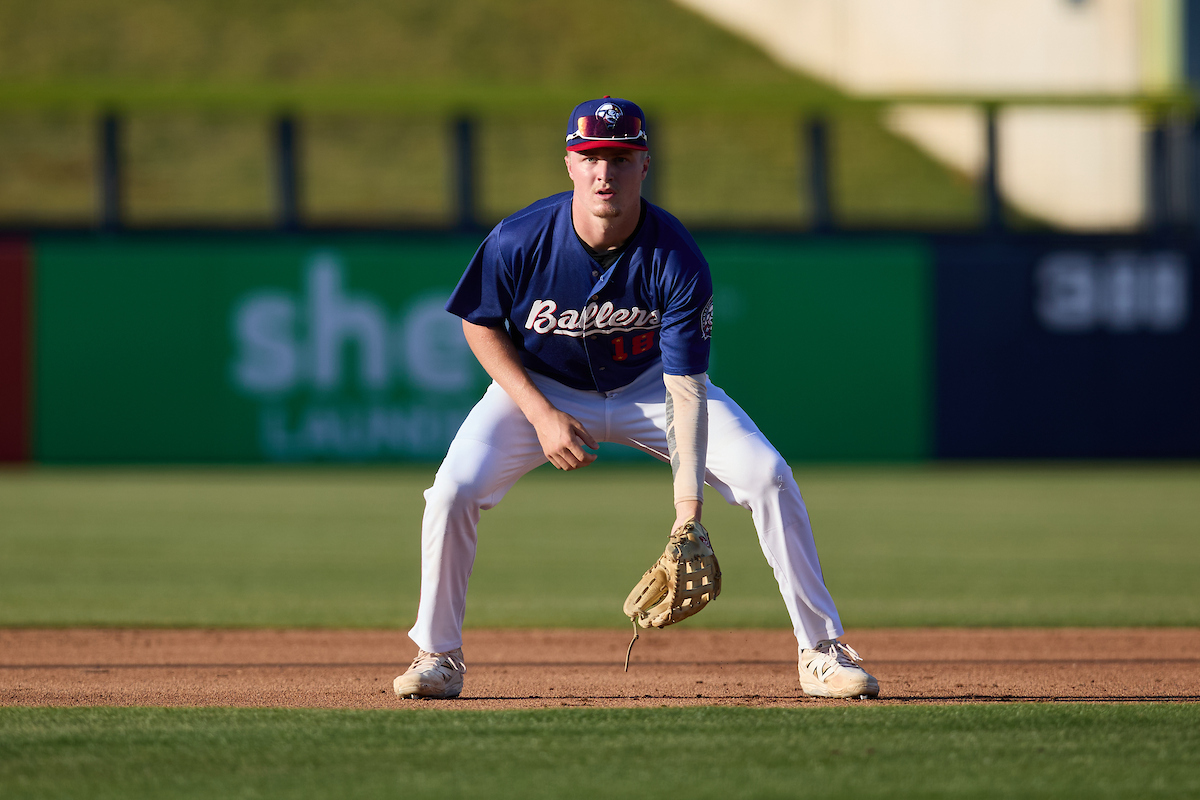A career-worst 2023 season and a spring camp loaded with internal competition made Gavin Sheets' spot on the major league roster look deeply imperiled in February. For what it's worth, he never seemed super worried about it. Slightly over week into the season, the 27-year-old is installed as the strong side of the White Sox DH platoon and occupying the middle of the order.
Granted, this is a White Sox offense whose early ineptitude has required references to the Year of the Pitcher, and whose lineup lost Eloy Jiménez, Luis Robert Jr. and Yoán Moncada before the end of the first road trip. But Sheets' first 33 plate appearances have included a streak of reaching eight-straight times, a separate game where he reached base three times, and finally Wednesday's five-RBI barrage that has him sitting at .333/.455/.704 on the young season.
This stretch alone would support the conclusion that he's feeling meaningfully better at the plate than he was after the All-Star break last year, since he's just two doubles shy of matching his extra-base hit totals from his 2023 second half.
"He was inconsistent with his move," said White Sox hitting coach Marcus Thames when asked to recall what stuck out about Sheets' previous season on video. "He would toe tap and then one time he'd do a leg lift. It was just all over the place. He wasn't getting to play everyday and that's hard for a young guy. That was me when I was younger, I tried to search. I had a big leg lift when I played and my timing would be off. He was just trying to get a sense of timing while not playing everyday."
"I was late because I was thinking too much," Sheets told me. "I was thinking about where my hands were, my placement, all that stuff. I was missing my pitch and I was a tick late and that creates popups. That creates late decisions and that creates chasing. I've been able to eliminate that a little so far."
Sheets wants to be aggressive at the plate and openly talks about driving the ball to the pull side in a manner some hitters are hesitant to do. This is not the swing nor the swing decision of someone bashful about trying to turn on the inner half.
Sheets' career history of swing decisions doesn't make that sound quite like apostasy, since power production rather than plate discipline has been the element of his 2021 rookie season that's been more difficult to reproduce. He's more aggressive than average, but it does not drag him into the disqualifying level of swing-and-miss or contact on the ground that would dissuade others.
Last season as he posted a sub-.500 OPS after the All-Star break, Sheets' chases were down from the previous season and he pulled the ball more often than ever, but ineffectively. He wound up setting a new career-high in infield popup rate, whereas hard contact to the pull side is usually his north star.
"When I feel like I can pull the ball to right field with power and I feel aggressive, usually the whole field comes into play," Sheets said. "When I feel like I try to back it up or use left field, I feel like I can't go left and I can't go right. So being on time to pull the ball and being in right-center allows me to back it up when I need to and use the whole field."
Thames is of the mind that it's perfectly possible for Sheets to get too pull-happy and views part of his role as keeping his hitter balanced out. But in Year 4 of his major league career, the subtext of any Sheets heater is why this one can be more sustainable than previous iterations, especially with his role in the White Sox offense suddenly looking as central than ever.
Last season, Sheets was openly thrown off by disparate playing time, which only grew more disparate as he struggled. It's not exactly a unique failing for hitters.
"It's not easy," Thames said. "You come from the minor leagues where you're playing everyday and then you get up here and you're platooning with guys, playing every four or five days."
Sheets' steadfast belief in his ability to be a major league regular has pulled him out of deeper holes than he ended the 2023 season in. And he obviously sees no coincidence that he's found a groove at the plate right as a steady burst of playing time has arrived after not starting in the opening series, even if he will still be platooned.
But Sheets' underlying goal was to fashion a version of his swing that was durable and repeatable through stretches of irregular playing time. The end result is someone who hopes they have acquired enough sweat equity to no longer be searching for resources by the time he digs in at the plate.
"I've been staying ready, seeing bullpens, seeing guys throw on the side and knowing whenever I got my opportunity I wanted to be ready for it," Sheets said. "I still do the iPitch and everything, and still compete against the pitcher and prepare the same way. But now it's just me versus the pitcher, and not me versus myself versus the pitcher. That cleans up a lot of things. Now I just worry about me versus him and not worried about where are my hands, all that stuff. I can remove that. If I can make it just me versus the pitcher, I'll have success."
Fedde's stateside adjustment
It's been a curiosity how Erick Fedde's standout success in the KBO would translate to the majors, for stylistic reasons as much as the difference in quality of competition. Last season in Korea, Fedde's sinker-sweeper-splitter attack piled up a 70 percent ground ball rate and he allowed just nine home runs in 180⅓ innings.
But in talking it through with the 31-year-old right-hander who has now pitched in both leagues, he acknowledged the differences in approach between the leagues that leads to stuff like there only being eight 20-plus home run hitters in the KBO last season.
"I guess it's like when you say 'This guy's a contact hitter, I'm going to try to throw it inside and let him just hit it weakly," here, you get burned a little bit more in there. [In Korea] early in counts they can take you deep, but here it's more that they're going to take three swings to hit it out of the park. That's always in the back of your head. You can use that to your advantage with swings and misses. I can step on breaking balls a little more and not really feel like you have to be in the zone as much. I still want to be in the zone but if guys are trying to hit it out of the park, they usually take bigger swings."
Fedde only struck out three in Cleveland on Wednesday, though outs on the ground were more readily available. His early ground ball rate (45.7 percent) is only slightly above-average and probably needs to be higher for him to provide a barrel of surplus value with mid-rotation production. But the real standout now is obviously that Fedde has allowed five home runs -- four of them to left-handed hitters -- in 14⅔ innings through three starts, signaling some vulnerability to left-handed power that his remodeled east-west attack did not have to contend with to this degree last season.
It puts all the more emphasis on Fedde's changeup, which gets classified as a splitter because he intentionally cultivates straight downward movement as a different look from the rest of his arsenal. On Wednesday he threw it 28 times -- as much as any other pitch -- but by called strikes/whiffs (four) it was his least effective offering.





